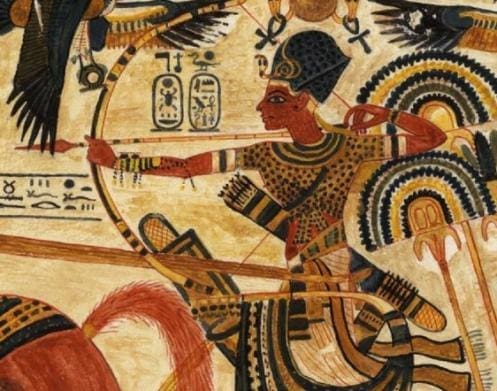Leather is one of the most useful and earliest discoveries. It is stout and resilient material made from tanning animal rawhides and skins. Before man invented alphabets, they using simple sign language and drawing on skin of animals for communication. Later they used this skin for clothing and shelter. In cold climates, the fur which was on top of the leather provide extreme warmth and in hot climates hides help to stay cool. Later man found how they preserved their animal hides for little longer time with the help of sun drying, smoking and bark extracts. Some raw leather hides were left in water, with some bark of trees and leaves containing tannic acid. This is how the tanned leather was discovered. It is believed that ancient Greek developed this process around 500 BC. The process continued in Greece and elsewhere.

Figure 1. Leather Tanning Process in Early 90s
Use of Leather in different civilizations
There were different types of products and leather works in different civilizations. Through the wall painting and arts in Egyptian tombs dating around 5000 BC it has been proved that leather was used for making boots, clothing, military equipment and for storage. For shields, armours, clothing and harnesses, Romans made extensive use of leather. They also used leather as obtained in ancient time, the quality of Roman sandals conveyed their class in the society.
From the Ancient times till now leather artificers have used different techniques and tools to employ leather for various functional and creative purposes. Assyria natives used leather as containers to store liquids. Mongolians used leather for making leather cover, flasks masks, decorative caps. Sumerians in Mesopotamia used leather for dress and diadems for ladies.

Figure 2. Egyptian Wall Painting
Artificers who produced these products belonged to leather guildsmen, who secretly guarded their leather crafting skills and managing it down from father to son. In the middle ages, leather become a proffered cover for dining chairs, as they were easy to maintain and did not absorb food odours. In the 16th century when cortex took control on Mexico, leather craftmanship was expoesed to the world. The spread of industrialization in the 18th and 19th centuries led to the demand for new types of leathers, such as belt leather to operate the mechanical systems. The invention of automobile, the demand for soft, lightweight footwear with a fashionable look, and the general increase in life expectancy led to the demand for durable, soft, supple, colourful leather. Traditional vegetable tanned leather was too stiff and thick for this need and thus the use of chromium salt was adopted and chrome tanning become the standard for footwear, fashion and upholstery leather. Cattle hide is a most common raw material. Leather is utilized for making attire, footwear, sacks, car seats, bookbinding, design adornments and furniture.
Modern technology has allowed innovations in the leather industry, as the development of chemicals, sophisticated equipments and processing methods have greatly expanded the aesthetic and leather feel as well as potential applications. Lather is the material of choice, not only for commercial but and also for aviation, marine and automobile applications.
Reference
- https://www.mooreandgiles.com/leather/resources/history/#:~:text=Our%20ancestors%20used%20leather%20to,crude%20tents%20from%20the%20hides.&text=The%20ancient%20Greeks%20are%20credited,water%20to%20preserve%20the%20leather.
- https://www.libertyleathergoods.com/history-of-leather/#:~:text=The%20history%20of%20leather%20began,Revolution%2C%20and%20into%20modern%20times.
- https://www.gulmoharlane.com/blog/leather-history-and-tradition

